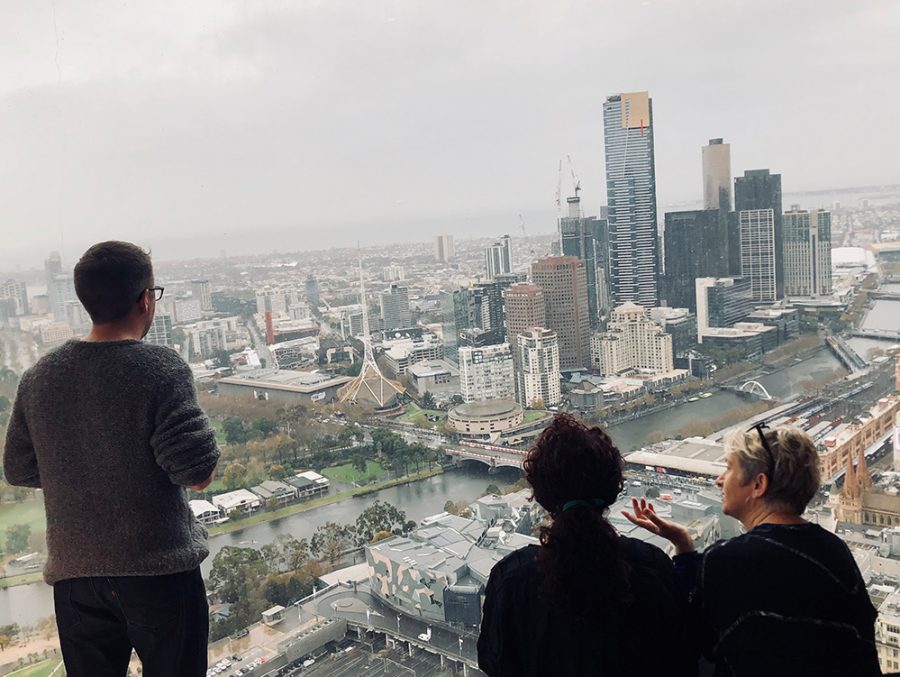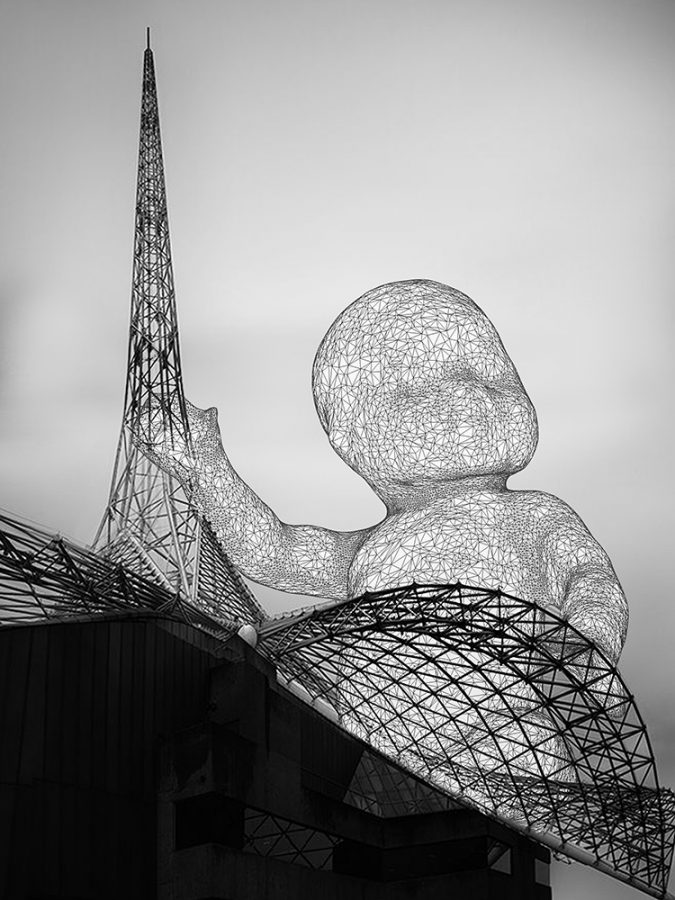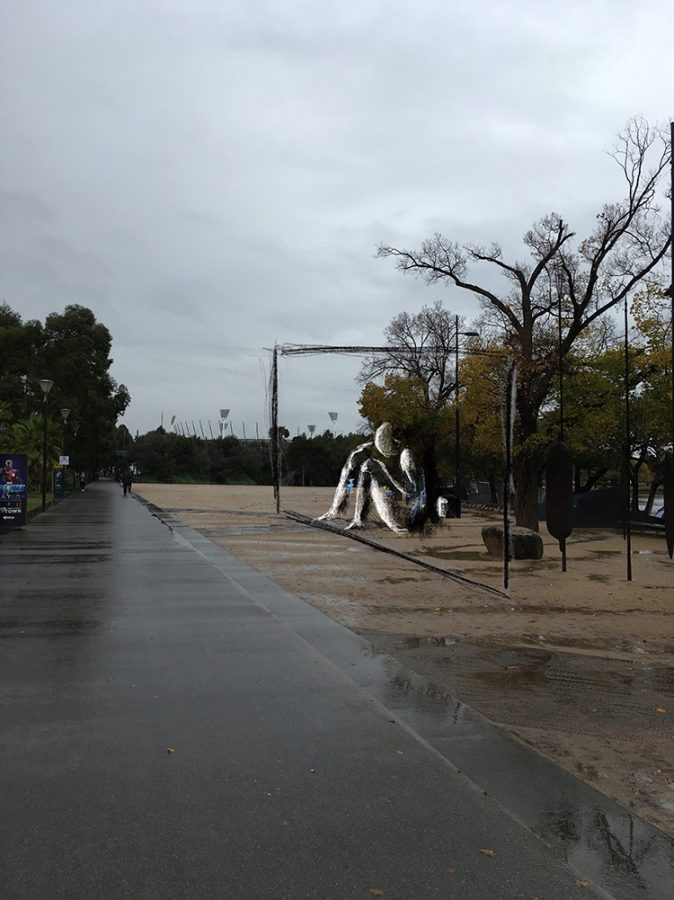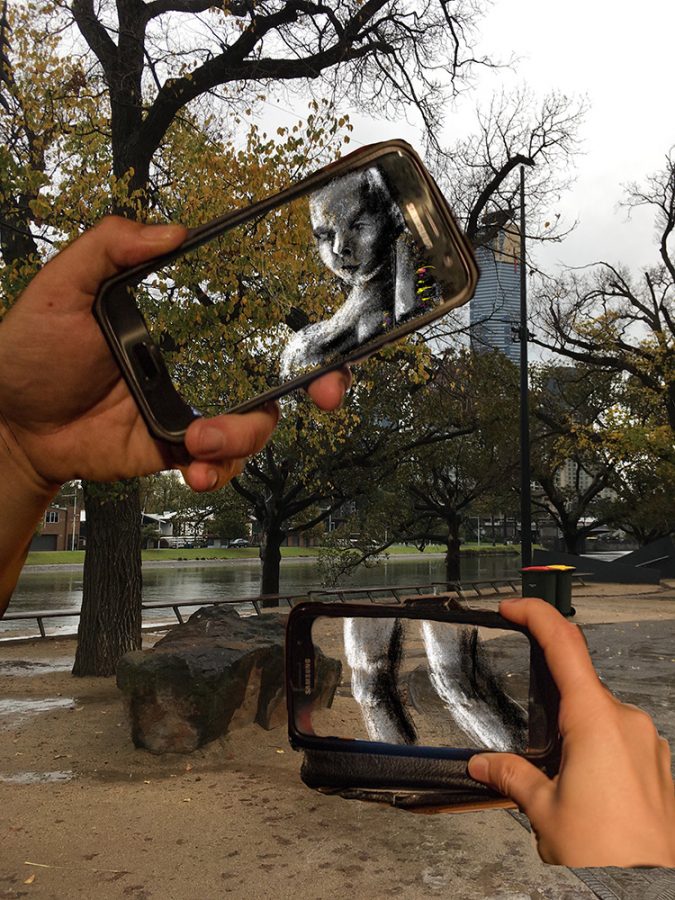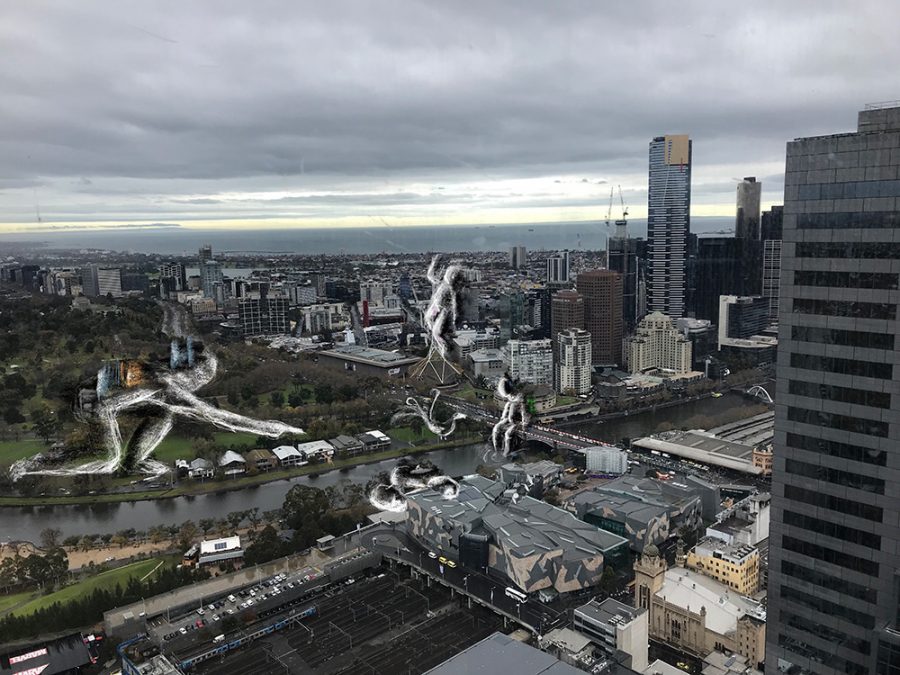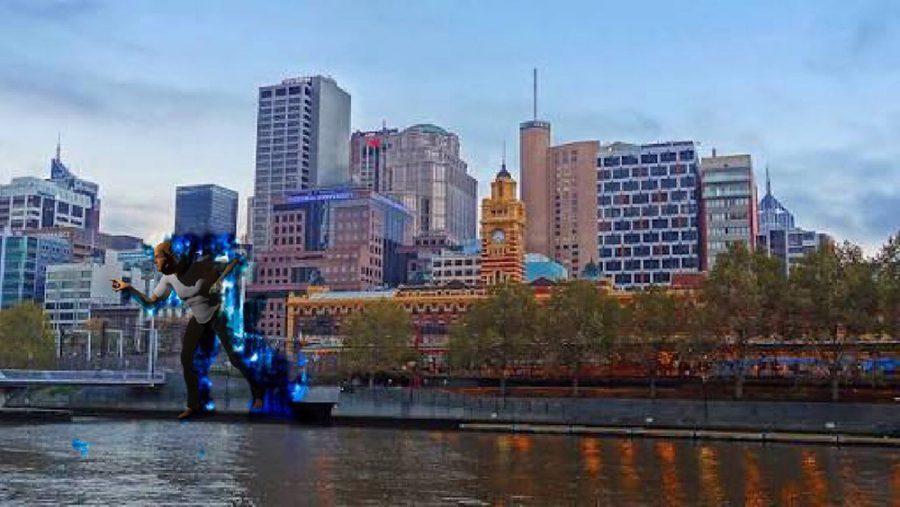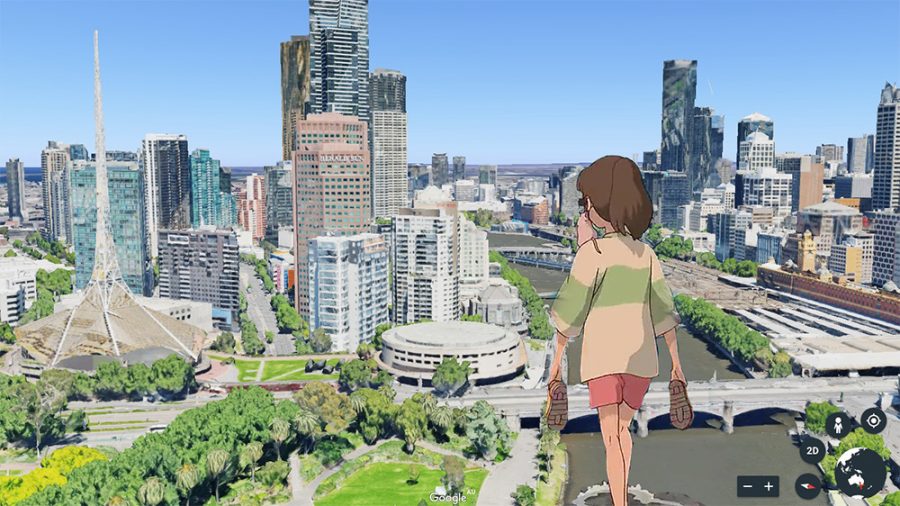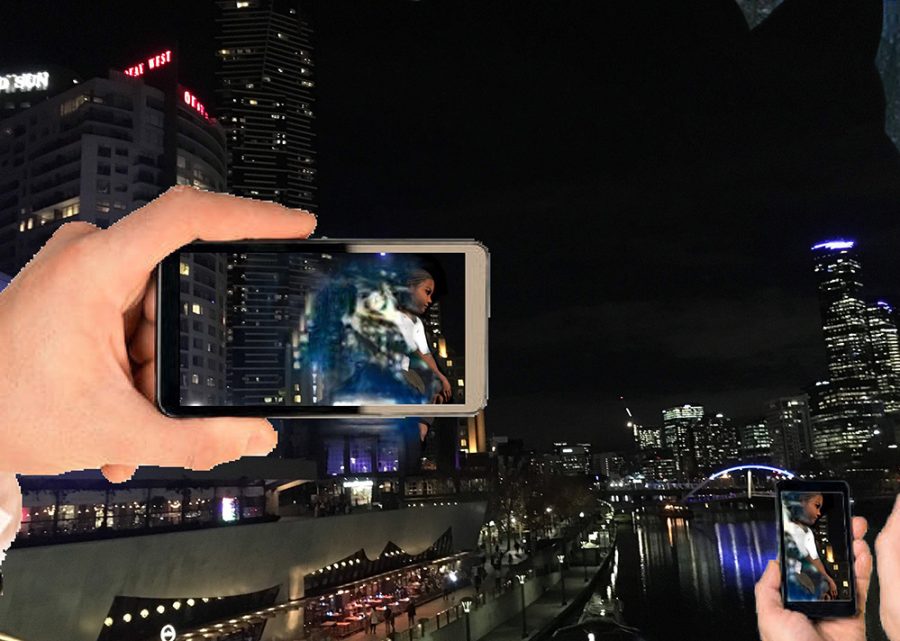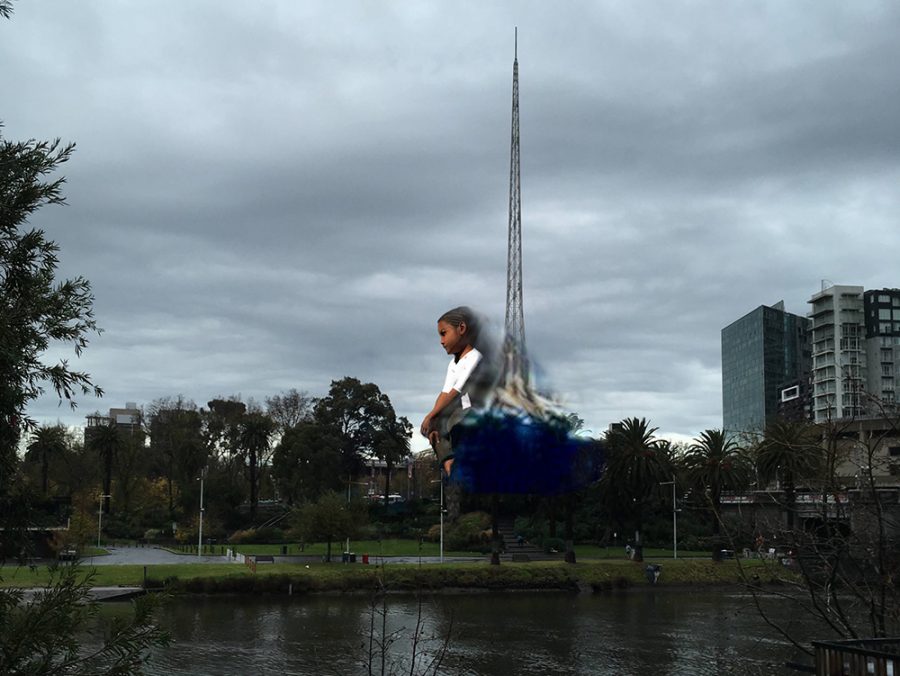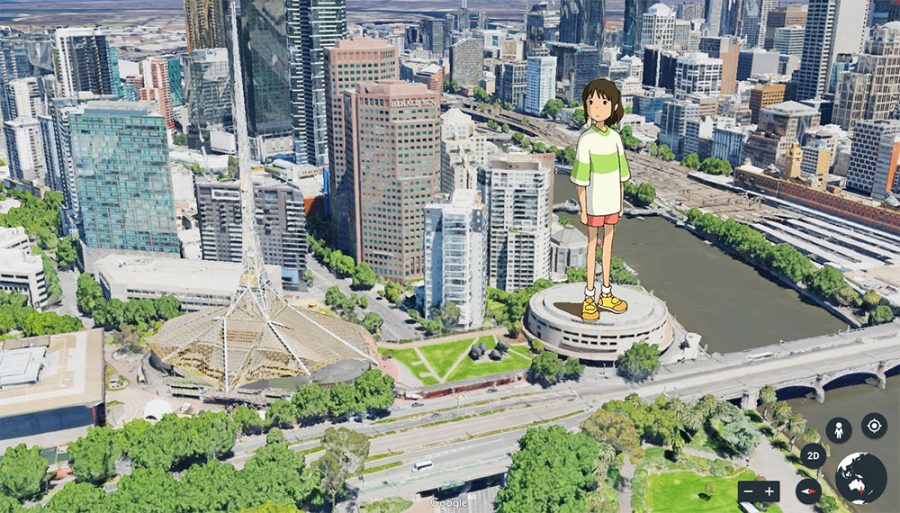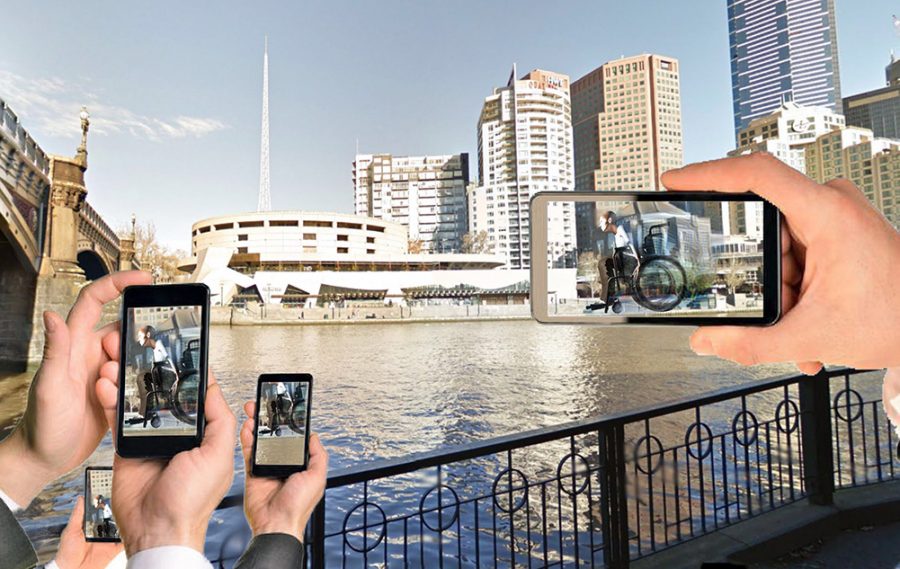Open Studio – Creative Development
June 2018 – Arts Centre Melbourne supported by City of Melbourne
Over three days the participants unpacked the research material and concept of Child of Now. Focused discussions on technical feasibility took place at the end of each day to ground speculation and move us closer to a deliverable project.
Participants
- Robert Walton, Lead Artist, Director
- Angharad Wynne-Jones, Head of Participation, Arts Centre Melbourne
- Emma Dodd, Creative Producer, Arts Centre Melbourne
- Mish Grigor, Artist, Co-founder of POST
- Luke McKinnon, Founder and Director, Common State, Communications
- Brad Hammond, Creative Technologist, Emerging Media System Design Expert
- Gendry Morales, Founder and CEO, Flight Plan, Blockchain Expert
- Margie Mahon, Research Innovation and Commercialization, University of Melbourne
- Prof Frank Vetere, Head Microsoft Centre for Social Natural User Interaction
- Dr Alison Bennett, Artist working in expanded photography and digital media
- J Rosenbaum, Contemporary Figurative Artist
One morning the team visited Investment Centre Victoria on Floor 46 of 55 Collins Street. The view of the stretch of the river addressed in Part II was critical in helping the team understand the scale of the project.
Focus Groups
Arts Centre Melbourne and Luke McKinnon director of Common State conducted two focus groups with members of the public about the concept and appeal of Child of Now. One group of 53 year olds and another of 23 year olds worked for 2 hours each on the project concept. The feedback gained from this exercise has informed the shape of the project submitted to this round of the Creative State Commissions.
The use of virtual and augmented reality was appealing to both groups, and particularly appealing was the ability to participate with friends and family in contributing your own image and then being able to see it again in the city. The 53 year olds strongly favoured an innovative project that puts the city and state on the international map in terms of ambition, as well as feeling connected to the idea of adding part of themselves to posterity. The 23 year olds were drawn to the idea of being able to participate with their friends and access the work during the evenings and night.
Comments from Focus Group participants
Being new and different makes the whole idea more appealing. A once in a lifetime chance that may not come again.
53 year old
[Appealing to] use virtual reality to experience time, and being a part of the largest portrait ever to be.
23 year old
Seeing/meeting lots of people born when I was, comparing our life experiences, celebrating a life lived in Melbourne. Being part of a one of a kind, historic event.
53 year old
Very relevant to my demographic: anxiety about the future job aspirations etc.
23 year old
[It is appealing] To be integrally part of something special putting Melbourne in the world spotlight.
53 year old
It seems like a really forward thinking art project which would be appealing to many demographics. Being able to see it on the big screen would be very cool. Multiple locations is great as is by phone.
23 year old
Blast Theory Development
In April and May 2018 Robert Walton was artist in residence at Blast Theory in Brighton UK as part of the Australia Council’s International Residency Program. Blast Theory are the world-leading pioneers of interactive art, asking thorny questions in public spaces. For six weeks Robert developed the concept for Child of Now under the mentorship of the Blast Theory team culminating in the first public presentation of the background research and working concept for the project.
Blast Theory made this short video at the beginning of the residency.
Early Sketches
Images above by Open Studio participants. There are more sample images at the very bottom of this page.
Context: Participatory Events Worldwide
AR and smartphones are only one aspect of this project. Child of Now draws on a heritage of participatory projects employing mystery and performance to create significant cultural moments and visitor attractions, that are also often initially characterized as being beyond the realms of possibility:
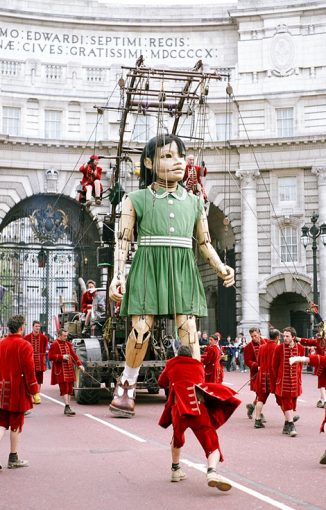
The Sultan’s Elephant – Royal de Luxe – 2005
“When we were trying to put on The Sultan’s Elephant, people kept saying, ‘You’ll never succeed.’ […] But, for me, it was always an incredibly political act to put it on in London’s public spaces – to say, this work is as important as anything that goes on in a concert hall or theatre. Everyone at the Department for Culture, Media and Sport had to trip over the Elephant to get to work in the morning. They couldn’t ignore it. […] What we’re giving people is the chance to take back the city.”
Marriage and Webb on creating ‘The Sultan’s Elephant’ – The Guardian
What is the city but its people? – Jeremy Deller, John McGrath, Quarantine – 2017
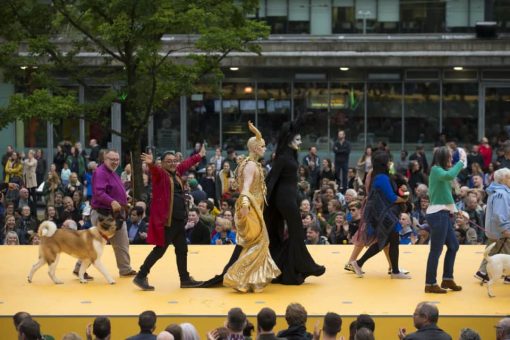
“Its message [is] about the power of individuality and community, and how the two can intertwine – It’s a modern portrait of the city.”
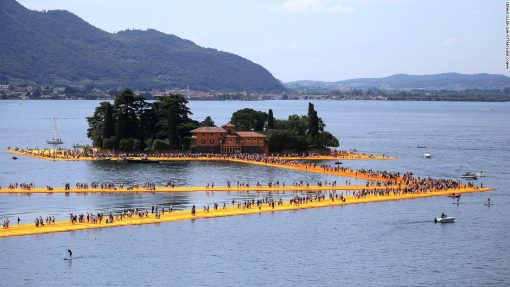
Floating Piers – Christo – 2016
“Christo’s Floating Piers on Lake Iseo—the New York-based artist’s first outdoor installation since 2005—was the world’s most-visited work of art 2016. Christo erected 3km of fabric-covered pontoons between an island and the shore and invited the public to walk on water. In total, 1.2 million people experienced the site-specific installation over 16 days last summer (an average of around 75,000 a day).” The Art Newspaper
It Christo took decades to realise this project which, like many of his works, at first appeared impossible.
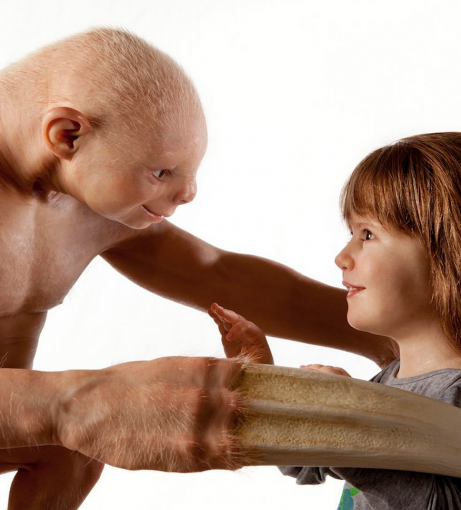
Consciousness – Patricia Piccinini – 2017
“Patricia Piccinini’s fantastical, mutant human and animal sculptures drew 8,300 visitors a day to the CCBB in Rio de Janeiro, 5,200 to its Brasilia venue and 3,100 to its São Paulo branch. That makes Piccinini the top contemporary artist in this year’s [2017] survey.” The Art Newspaper
The popularity of Piccinni’s work may stem from the combination of intriguing characters and speculative futurology. Its success speaks to the importance of the central figure as a being to empathise with.
Context: Transmedia Projects
2097: We Made Ourselves Over – Blast Theory – 2017 – Link
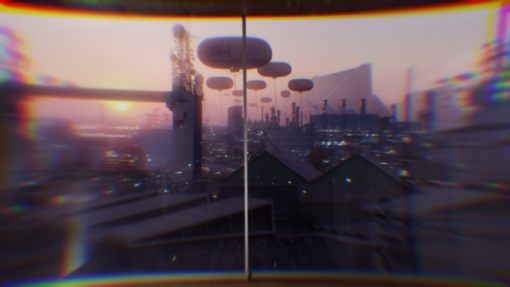 Combined an app, films, marketing campaign and immersive theatre experiences across the cities of Hull and Aarhus to engage tens of thousands of citizens in speculative sci-fi vision of life in 2097 when the cities would be completely deconstructed and rebuilt.
Combined an app, films, marketing campaign and immersive theatre experiences across the cities of Hull and Aarhus to engage tens of thousands of citizens in speculative sci-fi vision of life in 2097 when the cities would be completely deconstructed and rebuilt.
In five short science fiction films – each accompanied by an interactive film for smartphones – and through live events across both Hull and Aarhus, 2097: We Made Ourselves Over explores the belief that everyone has the power to act and influence the future – uncovering the unnerving and exhilarating idea that anything is possible.
World Without Oil – Ken Ekland – 2007 – Link
An alternate reality game (ARG) with the motto ‘Play it – before you live it’ created to call attention to, spark dialogue about, plan for and engineer solutions to a possible near-future global oil shortage, post peak oil. Audiences participated around the globe through social media and gatherings to organise and respond to the project’s call to action and themes.
Pandemic 1.0 – Lance Weller – 2011 – Link
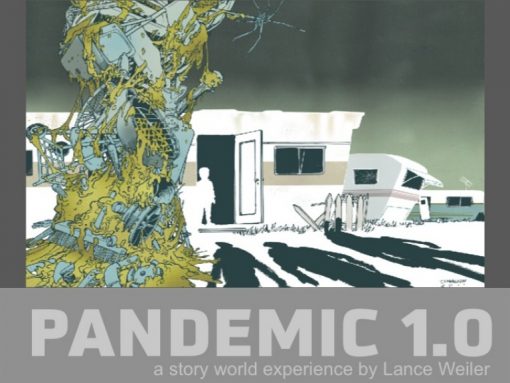 While the specific genre of this project is far from the aesthetic of Child of Now, the experimental combination of storytelling modes to create a transmedia relevant.
While the specific genre of this project is far from the aesthetic of Child of Now, the experimental combination of storytelling modes to create a transmedia relevant.
Pandemic 1.0 is part of a larger storytelling experience involving film, mobile, online, social gaming, print, and real world interactions. An official selection at the Sundance Film Festival, Pandemic 1.0 was an immersive storytelling experience that played out for 40,000 festival attendees and over 250,000 global players over the course of 120 hours.
Context: Augmented Reality Projects
“augmented reality is in nearly every consumer’s hands. And it makes the devices in everyone’s pockets that much more powerful for users who wish to explore a new communal, virtual space and how they can express themselves within it.” – Tasha Cronin – The Drum
The technology needed to create Child of Now is available and widely accessible.
Kakadu Dreaming – Indigital – 2017 – LINK
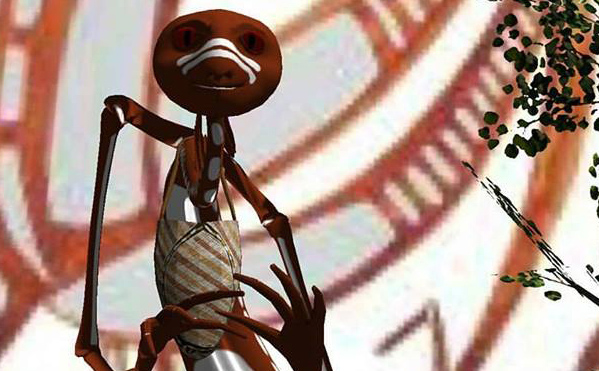 Created by Mikaela Jade, Indigital creates AR experiences with artists and holders of traditional knowledge across Australia.
Created by Mikaela Jade, Indigital creates AR experiences with artists and holders of traditional knowledge across Australia.
Mikaela has agreed to join the next period of development of Child of Now.
Indigital are working with Senior Artists from Bininj Kunwaral and Children’s Ground, Wurdurd Garriyigarrmerren in Kakadu National Park to bring a new dimension to 6 bark ochre dreamings that will be available soon in a fine arts quality augmented reality mini art series and high quality Tshirts.
This is the first project of it’s kind, uniting ancient Kakadu culture with cutting edge digital technology.
Snapchat and Jeff Koons Collaborate on Augmented Reality Art Project – 2017
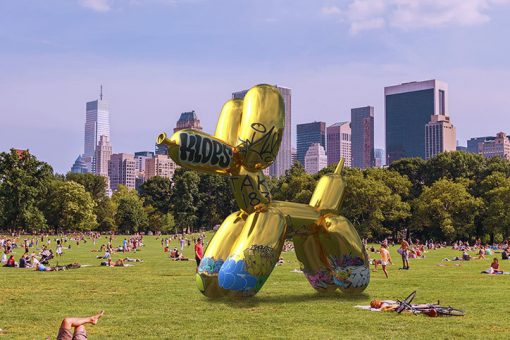 The Snapchat app enables audiences to encounter Koons sculptures in specific geographical locations. In an interesting development the work has been graffiti-bombed by artists Sebastian Errazuriz protesting that ‘The virtual public space belongs to us’. Snapchat’s project demonstrates how attempting to uncritically introduce of one form (sculpture) into an emerging medium like public space AR is problematic. Child of Now may circumvent some of these problems as it is designed primarily as a digital native from the ground up and includes a democratised, transforming central figure that is responsive to interaction.
The Snapchat app enables audiences to encounter Koons sculptures in specific geographical locations. In an interesting development the work has been graffiti-bombed by artists Sebastian Errazuriz protesting that ‘The virtual public space belongs to us’. Snapchat’s project demonstrates how attempting to uncritically introduce of one form (sculpture) into an emerging medium like public space AR is problematic. Child of Now may circumvent some of these problems as it is designed primarily as a digital native from the ground up and includes a democratised, transforming central figure that is responsive to interaction.
See New York Times article.
Mirages et Miracles – Claire Bardainne & Adrien Mondot – 2017 – Link
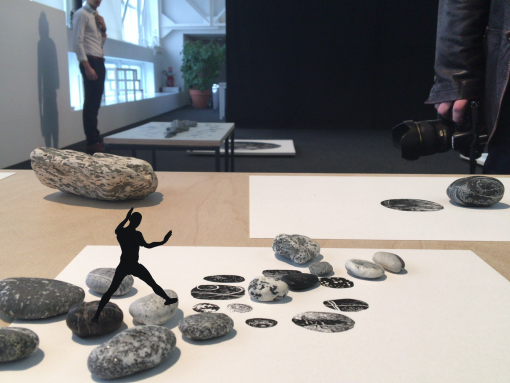
Of the many AR projects emerging worldwide this gallery-based experiment creating animation that interacts with traditional medium art works is the most aesthetically compelling.
AR Experiments – Google
Creative Brief
The urgent aim of this project is to create a rare and extraordinary moment in the life of Victoria for people to consciously empathize with future generations who will inherit our culture, customs and built environment and face the challenges of climate chaos caused by generations living now. By following the life of a child born in 2020, made up of the contributed faces, dreams and gestures of the current population, it becomes possible to rehearse Victoria’s future in an invested, emotional and human way.
Centered on the poetics of the effects of time on the human body, the project promotes radical empathy for the fleeting nature of our own lives, the collective lives of friends, families and communities, and by extension to the shifting nature of our society and unique ecosystem. Far from being morbid, the project joyously celebrates the (non-secular) human urge to extend beyond our individual selves to be part of the extraordinary adventure of life unfolding on planet Earth. The project aims to create a moment of enfranchisement with the future, which often feels like it is out of the hands of ‘normal people’, by providing a point of focus, an invitation to participate and a provocation to connect through a once in a lifetime art event.
PART I – Gathering
Starting with the question ‘what will life be like for children born in 2020’, you are invited to attend an art event where you get to explore how you feel time and imagine the future. At the event you will get to experience a vision of the future through an immersive Virtual Reality installation. The second part of the event asks, ‘Can we rehearse a future that is fairer than our past?’ and invites you to help tackle the challenges Victorians will face from climate change and mass migration, to shifting understandings of gender, sovereignty, race, technology and genetics. In the final part of the event you can contribute your own advice, ideas, apologies, encouragement or words of wisdom to the future generations of Victoria and can donate part of yourself to the largest collective portrait ever created called The Child of Now. These events will take place at 10 arts centres and public places across Victoria during 2020.
PART II – Portrait
In 2021 the most ambitious portrait of the people of Victoria ever made will come to life, generated from the thousands of faces, gestures and dreams of the participants in Part I. It is a 100-meter-tall being called The Child of Now.
The giant Child of Now is born in the sky above the Yarra river and learns to walk between the skyscrapers of Melbourne CBD. Every minute the giant’s face changes as it ages before your eyes slowly moving through all the faces gathered in Part I. It is a living, breathing portrait of the people of Victoria, and it has a mind of its own. You can see it through large screens along the river, through your mobile phone and through live streams globally. The giant is playful and curious, it learns about its city home and the people who come to see it.
Over time the Child of Now learns how to communicate directly with the live audience along the riverbanks. Though it cannot speak in a language we can understand, it can learn sign language and responds to the behaviour of the live audience. It also responds well to music and singing. As it moves through the city, audiences must walk along the riverbanks to keep up. If the Child of Now is sad, it can be comforted by the visitors, if it makes a mistake, it can be consoled. Over time it reflects-back to us something of our collective selves, and helps us make sense of our possible futures.
The Child of Now will age from 0 to 100 over an epic ten-day performance. During each day of the performance the Child of Now is alive, walking, playing, communicating, sleeping, peeing, climbing, 24 hours a day. Contributors will know exactly when their face and gestures will be present in the performance and can invite family and friends to witness their moment 100m high against the city skyline.
On the tenth day, the Child of Now is 100 and will go to sleep for a final time at a candle-lit vigil for the life of the next century, creating a city-stopping event attended by thousands of visitors and watched online around the world.The ten-day life-span of the Child of Now is then replayed on a loop for the following year, remaining discoverable to millions of visitors until it slowly fades.
Key Details
- The Child of Now is amongst the most ambitious portrait and performance projects ever undertaken that requires collaboration across the creative industries, the arts and research.
- For the portrait to be made up of a representative sample of Victorians, Part I will move around the state and actively seek out and engage diverse community participation with specific detailed targets established before it begins.
- While technically complex, our partners at Google Creative Lab, The Microsoft Centre for Social Natural User Interaction, ACMI and other technical collaborators have established that the required technology is currently available and ready to be rolled out at scale over the next three years.
- The project had a creative development intensive in June ‘18 supported by ACM and CoM comprising some of the state’s leading artists, creative technologists and thinkers which led to the concept being tested at two focus groups with members of the public (23 years olds and 53 year olds), please see supporting webpage for more information.
Key Moments of Interaction
Part I
Time Slip: Seen through the eyes of the 100m tall Child of Now, this virtual reality film of the past 2000 and future 100 years of Melbourne and Victoria is experienced on scale model of Victoria’s Yarra river.
Gathering: Donating advice, aspirations and hopes for the next century along with digital face and body scan, includes an experience of seeing own face age or rejuvenate in realtime.
Part II
Seeing yourself: Visiting Melbourne CBD to see when own, friends or family face and body is the 100m tall Child of Now.
Following: Mass participation experience moving around Yarra river communicating with Child of Now and helping it make decisions through large public screens.
Passing: Seeing the Child of Now on the way to and from work every day, noticing it age as the days pass, seeing the crowds and following the story online.
Sleeping: The Child of Now is alive and fascinating even during the night when it is asleep. Its face still changes as it dreams, snores and occasionally farts.
Vigil: Closing vigil for final moments of the life of the Child of Now as it goes to sleep for the last time.
Discovering: Locating Child of Now on own device around the city both during the live performance and for one year afterwards.
